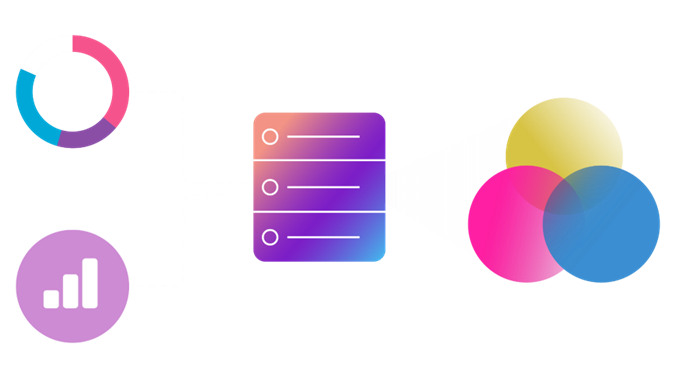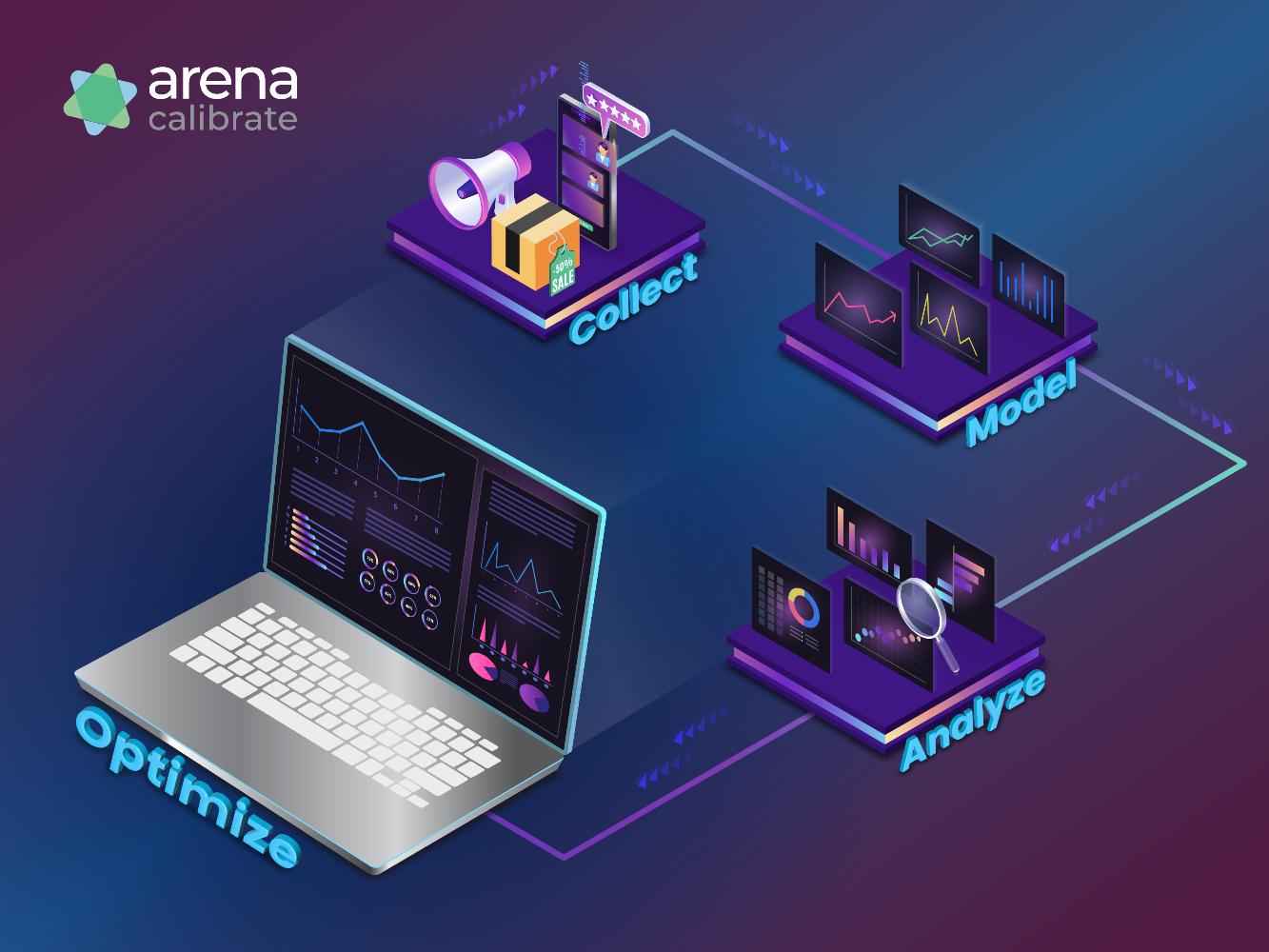Has your measurement team dived into the new Google Analytics 4? If you have, then you’ll notice how deep the plunge is. If you haven’t, well, you’ll know that the waters are different now. Marketers have shared their concerns around how stark the transition is from its predecessor, Universal Analytics.
Google Analytics 4’s capabilities and UI are very different. The user interface takes some getting used to. Data collection is not what it once was, and the reporting process has undergone a notable shift from the standard universal analytics properties.
But despite these changes, Google Analytics 4 still remains a powerful analytics tool, if you know how to set up GA4 properly.
In this blog, we’re going to tackle the top three most common challenges of Google Analytics 4 and give you a step-by-step process on how to overcome them. This will provide you with a seamless transition to GA4 and allow you to keep your finger on the pulse of all your data.
Ready to get started?
OK, let’s dive straight in.
Challenge #1: Limitations in data export and storage
Unlike its predecessor, GA4 doesn’t allow a direct option for exporting data. Not being able to extract raw data is just as consequential as it is frustrating. It prevents you from putting it under the microscope and analyzing it from all angles. But what does this really mean for you and your team?
Patterns will be more difficult to identify. Insights into user behavior will be limited. And the customer journey will be more of a mystery. Without access to raw data, analysts may be restricted to using the pre-aggregated reports and pre-defined metrics offered by the platform.
Needless to say, this can limit your ability to explore unique data points, apply custom calculations, or perform more advanced statistical analyses. Yes, it’s frustrating but there are ways you can overcome this problem.
How to overcome this

Use Google Analytics Data API
This is a powerful tool that allows you to pragmatically access and collect data from Google Analytics 4 by letting you retrieve specific data points, metrics, and dimensions directly from the GA4 data set.
You can make API requests to fetch data based on its specific requirements and access the retrieved data in a structured format, such as JSON. This provides an avenue to access more granular data beyond what is available in the aggregated reports.
Leverage Arena Calibrate to access raw data
Using Arena Calibrate is a quick and effective way to overcome GA4’s limitations in exporting data. The dashboard tackles this problem by integrating GA4 with Snowflake for advanced analysis and historical data storage as well as utilizing custom data solutions.
What’s more is that you can also have access to the app data stream, allowing you to analyze user behavior across multiple channels. This includes understanding the actions of active users within your app, identifying trends, and deriving insights from app data to improve your overall user experience
Challenge #2: Limited Default Reports and Customization
While Google Analytics 4 offers a new set of features and insights, one of the challenges users face is the limited availability of default reports and the level of customization within the platform.
Limited default reports
Google Analytics 4 provides a streamlined set of default reports compared to Universal Analytics. The pre-built reports focus on high-level metrics and aggregated data, which may not provide the same level of detail or specific insights as the default reports in the Universal Analytics property. Here are some of the main reporting cases that this will impact on.
Standard traffic reports
In a standard traffic report, Google Analytics 4 may provide a more high-level view of metrics such as:
- Overall sessions
- Pageviews
- Average session duration
However, GA4 may lack the same level of granular detail that Universal Analytics offers. For example, you might have difficulty accessing specific data like referral sources, landing page performance, or user demographics without additional customization. This could limit your ability to analyze the sources of traffic or identify trends that contribute to website performance.
Lead generation reports
When analyzing lead generation efforts, Universal Analytics offers more comprehensive reporting capabilities. It allows you to track specific conversion goals and set up funnels to understand the user journey leading to conversions.
You could even take your analysis one step further by using their advanced features, such as multi-channel attribution and goal flow analysis, which are crucial to assessing the effectiveness of your lead generation campaigns.
In contrast, Google Analytics 4's default reports may provide limited insights into lead generation, making it more challenging for your team to track and analyze conversions with the same level of granularity.
Ecommerce performance reports
When it comes to ecommerce, Universal Analytics excels with its default reporting system, hitting the bullseye for online businesses. It provides detailed reports on a whole range of areas, including:
- Product performance
- Transaction data
- Revenue sources, and
- Conversion rates.
What’s more is that you can also set up enhanced ecommerce tracking to analyze user behaviour throughout the entire customer journey, from product views to purchases.
Whereas with Google Analytics 4, the default reports for ecommerce might not provide the same level of detailed insights. You may need additional customization to access specific data points, such as product-level performance or shopping behavior, which are crucial for optimizing your online store's performance.
Customization limitations
Unlike Universal Analytics, where users had more flexibility to create custom reports and apply advanced filters. Google Analytics 4 has a more structured approach to reporting. Marketing teams and agencies may initially find it challenging to create highly-tailored reports or drill down into specific segments of data due to the platform's limitations.
How to overcome this
Utilize the Analysis Hub in Google Analytics 4
The Analysis Hub provides a flexible framework for creating custom reports using drag-and-drop components. Users can define specific dimensions, metrics, segments, and filters to generate customized reports tailored to their unique needs. This allows for more in-depth analysis and the creation of specialized reports.
Leverage Arena Calibrate
Arena Calibrate can combine GA4 with external Analytics platforms to customize the reports.
Challenge #3: Limitations in blending data across channels
Another GA4 limitation is its inability to blend data across channels and data streams. This is problematic because it prevents you from gaining a holistic understanding of the user’s journey across platforms and also inhibits seamless merging of data from different sources.
The predefined reports in GA4 only focuses on event-based tracking, making it more challenging to analyze the user journey holistically and identify potential gaps or optimization opportunities.
How to overcome this
Provide an aggregated view of website performance
Having an aggregated view of your website’s performance will reward you with a holistic perspective on the effectiveness of your marketing efforts. For this to happen, you need to blend or integrate data from various sources - a feature that’s not directly available within the platform itself.

However, you can overcome this by following the steps below:
- Export data from external sources: Extract data from different sources such as social media platforms, email marketing tools, CRM systems, or any other relevant marketing channels. Export the data in a compatible format such as CSV, Excel, or Google Sheets.
- Prepare the data for blending: Ensure that the exported data is properly formatted and structured. Clean up the data, standardize naming conventions, and ensure compatibility with GA4.
- Import data to Google Analytics 4: To bring the blended data into GA4, you can use the Measurement Protocol or the BigQuery Export feature.
- Measurement Protocol: Use the Measurement Protocol to send custom events, user properties, or other data points directly to your GA4 property. You can programmatically send data using HTTP requests or by utilizing SDKs or libraries available in various programming languages.
- BigQuery Export: If you have a Google Cloud project and the BigQuery Export feature enabled for your GA4 property, you can export your GA4 data to BigQuery. Once the data is in BigQuery, you can merge it with the external data using SQL queries and create custom reports or dashboards based on the blended dataset.
- Combine and analyze the blended data: In BigQuery or using custom reporting tools, you can combine the GA4 data with the imported external data. By writing SQL queries or using visualization tools, you can analyze the blended dataset and gain insights into the user journey, performance across different channels, and other relevant metrics.
This aggregated view allows you to gain a holistic understanding of the effectiveness of your marketing efforts and identify trends or patterns that span multiple channels.
Analyze specific insights in GA4
In addition to the aggregated view, observed data in GA4 offers specific insights into individual posts and user interactions. It’s a feature that allows you to analyze data at a granular level, giving you detailed insights into the performance of individual campaigns, content pieces, or marketing initiatives.
This level of detail helps you understand the specific elements that resonate with your audience and contribute to conversions or engagement. And so, by leveraging blended and observed data methodologies in GA4, you can comprehensively understand your audience engagement, and conversion metrics.
While the default reports in GA4 may have limitations, combining aggregated data from different channels and analyzing observed data at a granular level enables you to overcome these limitations and derive meaningful insights.
Overcome these limitations for a powerful analytics tool
July 1st 2023 will mark the official transition to Google Analytics 4. Those who know how to leverage it and overcome its limitations will gain an unfair competitive advantage in the market. those who fail to do this unfortunately won’t have all the essential data to create high-impact marketing reports that enhance decision-making.
If you’re having difficulties with Google Analytics 4 and need a hand to build a more powerful analytics solution, then write to us today. One of our specialists will configure your Google Analytics account to ensure that you maximize the full potential of your data.




